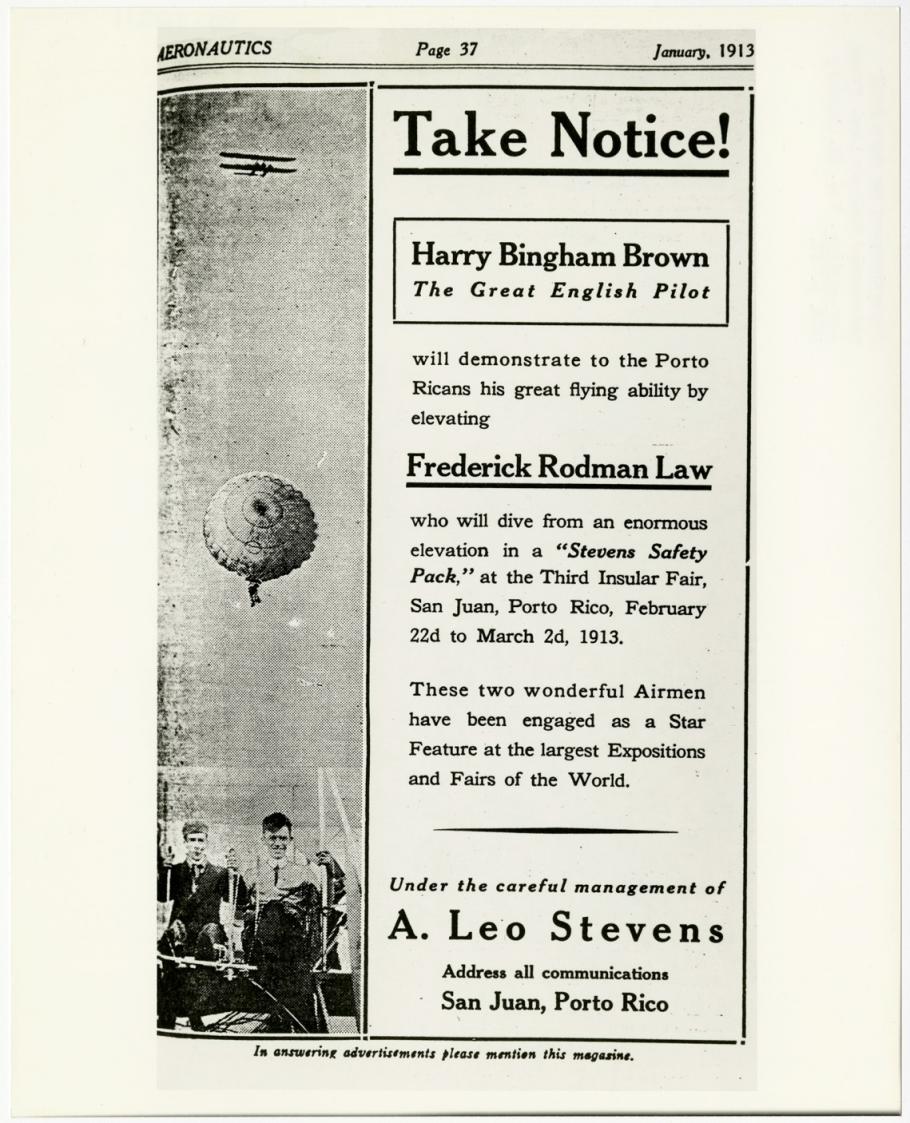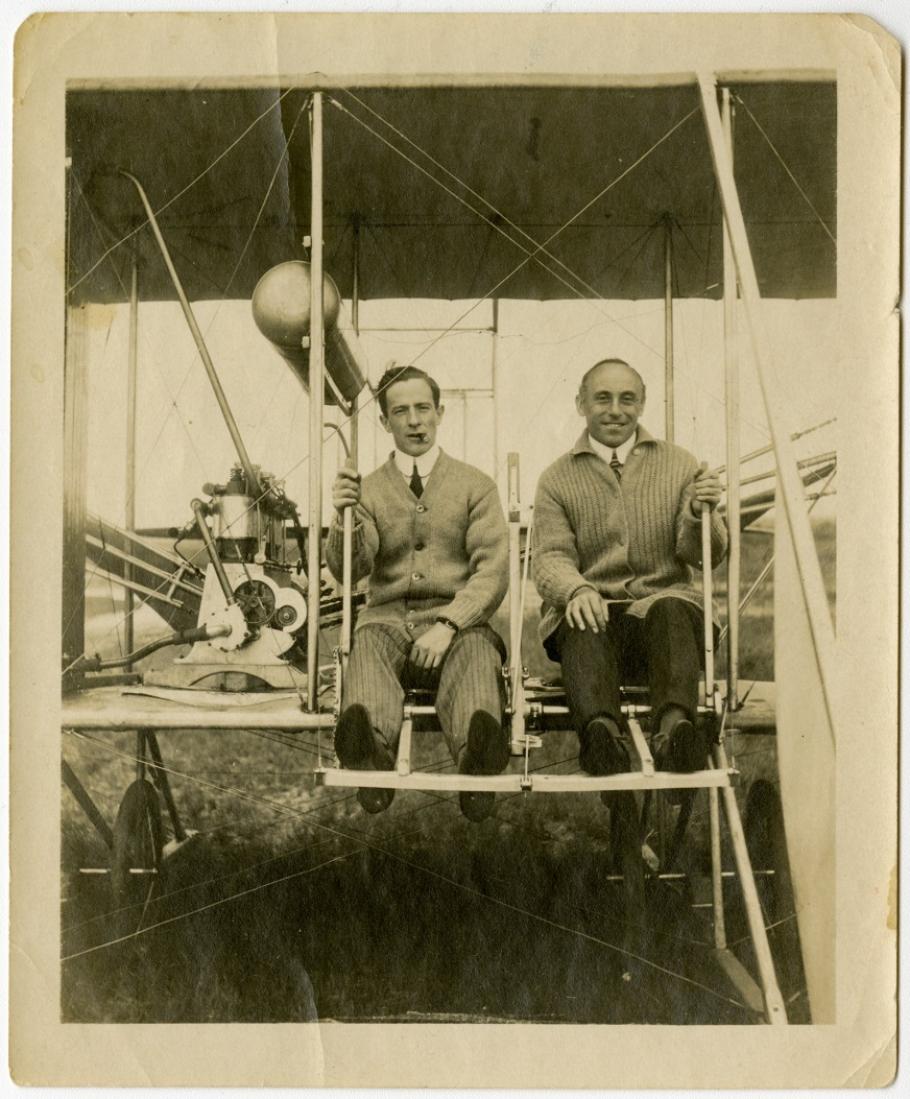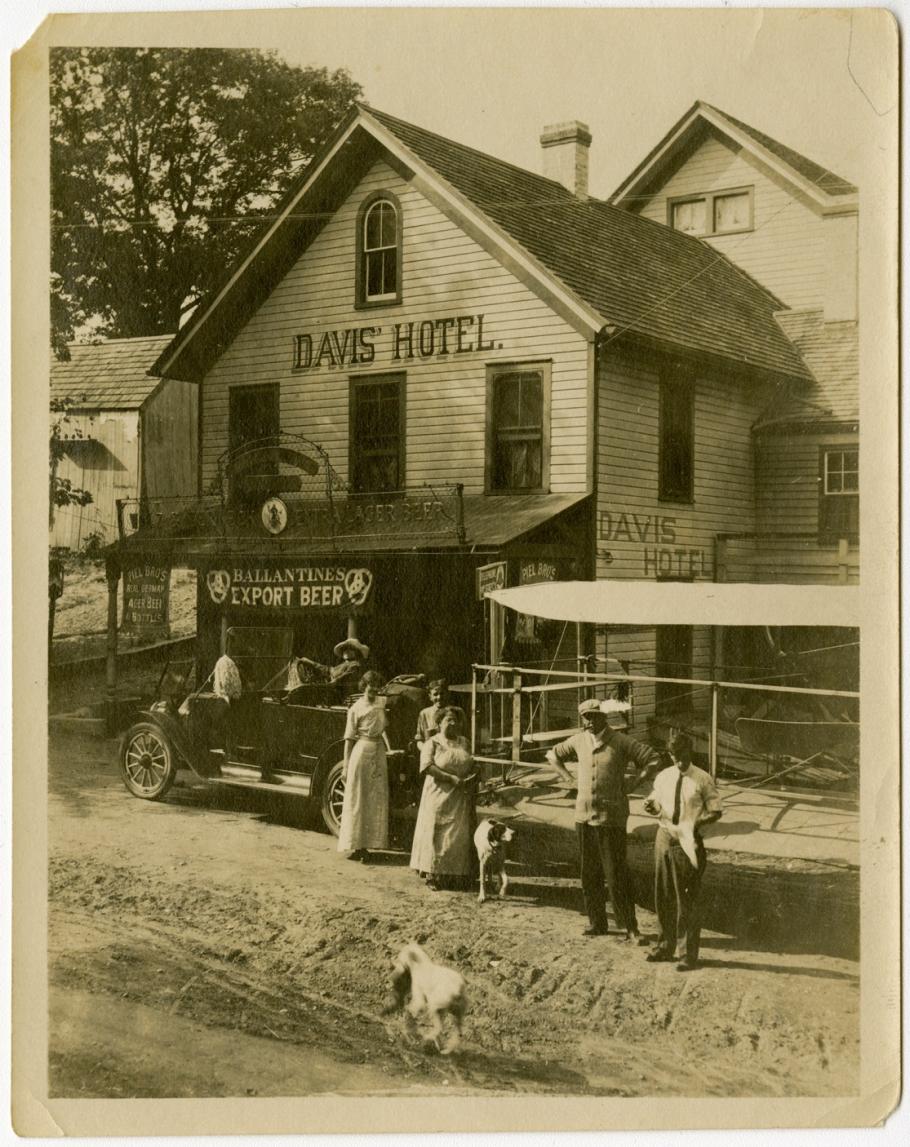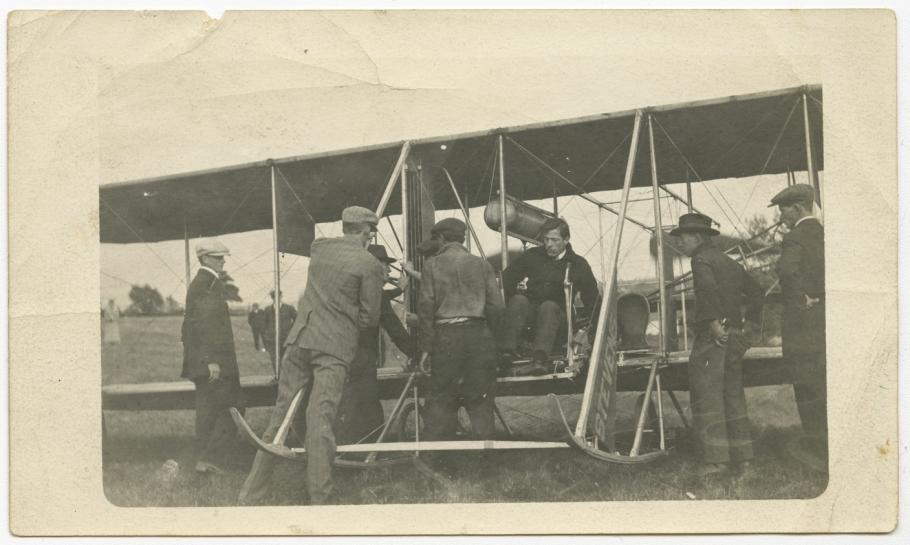While it might come as a bit of a shock, the topics of aviation and sharks rarely intersect here at the National Air and Space Museum. (Sure we have some nifty nose art, but admit it; connecting these two subjects in any way, shape, or form is really quite a stretch!) Luckily, just in time for Shark Week, the NASM Archives accessioned a new item into its collection: The Harry Bingham Brown Scrapbook (Acc. No. 2014-0038)!
Harry Bingham Brown sits at the controls of his Wright biplane, circa 1913. Location unknown.
While rehousing this new accession I came across a newspaper article dated September 23, 1913, (unconfirmed, but possibly from the The Island Patriot of Charlottetown, Prince Edward Island) in which Harry Bingham Brown gives his account of a harrowing solo flight he completed while giving an aviation exhibition at the Puerto Rico Insular Fair:
Last February, for instance, he was down at Porto Rico [sic], giving an exhibition of flying for the Porto Rico Insular Fair. This was the first flight ever made there. He started to fly from the city of San Juan and out around Moro Castle [sic]. This castle is situated on a precipitous height and there is a sheer drop of one thousand feet from the top of the tower to the water. When several thousand feet in the air, he got caught in a whirlpool or eddy of air, caused by the great height of this castle. Although the machine was going at top speed, he tried to send it higher, but it was impossible. He found himself dropping, dropping, dropping. He felt, as it were, the seat on which he was sitting leaving him, and as if he was sitting on air for a short time. He thought that he was high enough to dodge the eddy, but he had mis-calculated his distance. He was steadily drawn by the aerial maelstrom until within two hundred feet of the water.
He said to himself “this is the last flight for me. I can do nothing, only sit and wait. I would not have minded meeting death in an ordinary way, but I could see beneath me the sharks, waiting to make a meal of me.”
(At this point the sharks were very numerous as the drainage from a packing factory passed by there and the “man eaters” were always on the wait for the offal.)
“Finally, when I thought it was all up with me,” said Mr. Brown, “the machine passed over the spot and I flew level, clear over the town just skimming the palace, I could see the crowds of Porto Ricans and Spaniards gazing up at me. I covered in that flight, about twenty-five or thirty miles and finally landed and got back to the fair grounds from where I started. If my motor had stopped, I would not be here to tell the story.”
It isn’t clear if the crowds of onlookers gazing up at Brown were aware of the pilot’s dread, but he, and his then fiancée, were certainly rattled by his brush with death. A few months after this story was printed, in the summer of 1914, Harry Bingham Brown retired from the aviation world at the behest of his fiancée. I’m sure we can all agree that love bites far less than a swarm of hungry sharks!
While this ad might seem a bit stale and underwhelming by today’s standards, it’s important to remember that in the early days of aviation, adventuresome pilots, like Harry Bingham Brown, commonly brought the thrill of flight to curious crowds attending fairs, airshows, and a variety of other events. With A. Leo Stevens, famous balloonist and aviation promoter, as his manager, Brown gained associations with other pioneering aviators, such as George W. Beatty, Harry Atwood, Ruth Law, and her husband, Frederick Rodman Law. With Brown at the controls of his Wright biplane, Rodman Law pulled off many daring parachute jumps. Stevens recognized how he could monetize the duo’s ability to awe crowds with the bold stunt, so their act was often publicized in magazines like Aeronautics. Here are a few more glimpses of the photographs that were accessioned with Brown’s scrapbook:
Daredevil pilot Harry Bingham Brown sits at the controls of his Wright biplane, smoking his cigar next to his plane’s gas tank, circa 1912. An unknown man sits to his left.
On the road again! Harry Bingham Brown (far right) and his entourage stretch their legs in front of Davis’ Hotel, circa 1912.
Harry Bingham Brown sits at the controls of his Wright biplane, while a group of men help ready him for takeoff, circa 1913. Location unknown.
Interested in learning more about Harry Bingham Brown and other Early Birds of Aviation? Visitors can make an appointment to view our collections in the Archives’ Reading Room.




